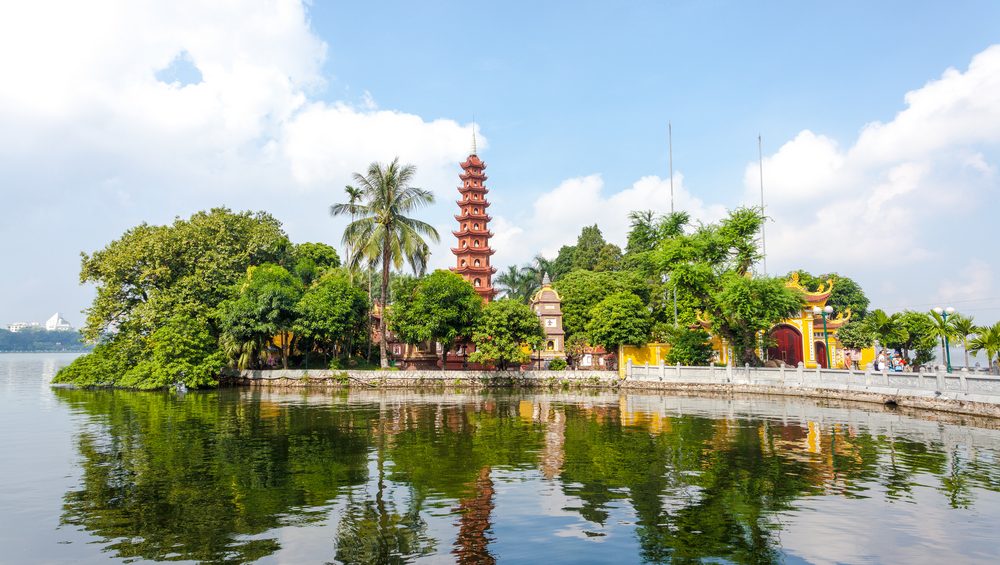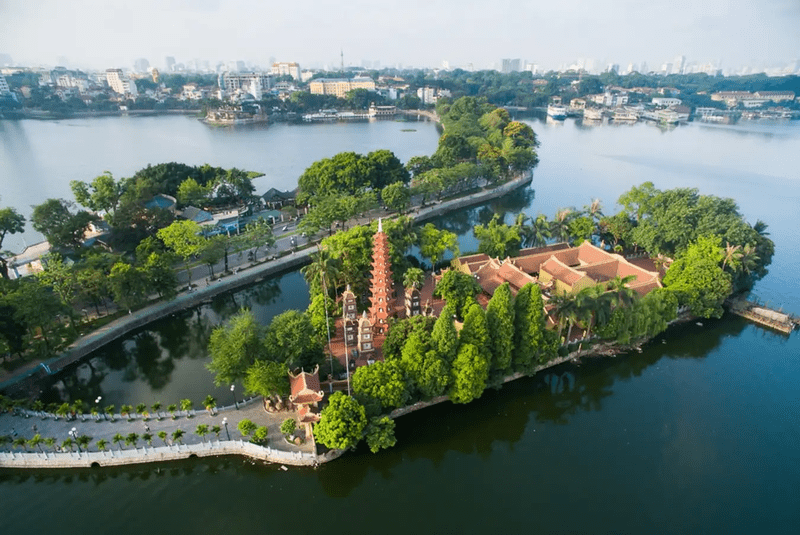Tran Quoc Pagoda
Overview
Tran Quoc Pagoda is the oldest Buddhist temple in Hanoi, Vietnam, located on a small island in the West Lake. With its history dating back over 1,500 years, it stands as a symbol of spiritual heritage and architectural elegance in the capital.

History and Significance
Originally built during the Ly Nam De Dynasty (6th century), Tran Quoc Pagoda was once located on the banks of the Red River before being relocated to West Lake in the 17th century. Over the centuries, it has hosted numerous royal visits and played a vital role in spreading Buddhism in Vietnam.
Architecture and Highlights
Tran Quoc Pagoda is a harmonious blend of ancient Vietnamese architecture and Buddhist symbolism. Key highlights include:
-
A striking 11-tiered lotus-shaped tower (Bảo Tháp) standing 15 meters tall.
-
Surrounding Bodhi trees, including one gifted from India in 1959.
-
Intricate statues and altars inside the main prayer hall.
-
A peaceful courtyard filled with bonsai and ornamental details.

Location and Access
Located at the intersection of Thanh Nien and Yen Phu Streets in Tay Ho District, Hanoi, the pagoda is easily accessible from central areas of the city. It’s a popular spiritual destination for both locals and tourists, especially during Buddhist festivals.
Cultural and Spiritual Importance
As a national cultural relic, Tran Quoc Pagoda is more than just a religious site—it is a historical symbol of Vietnamese Buddhism. Visitors come to seek peace, admire the scenic beauty, and connect with the cultural soul of Hanoi. Its reflection on the waters of West Lake makes it one of the most photographed temples in the country.

